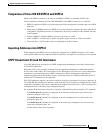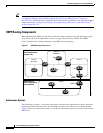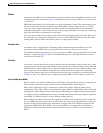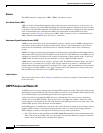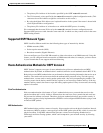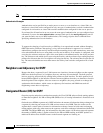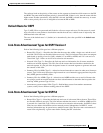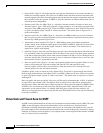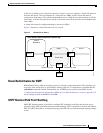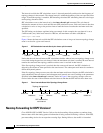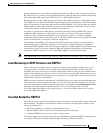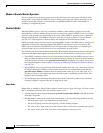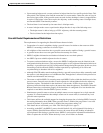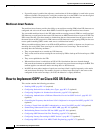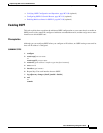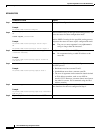
Implementing OSPF on Cisco IOS XR Software
Information About Implementing OSPF on Cisco IOS XR Software
RC-139
Cisco IOS XR Routing Configuration Guide
In the case in which an area cannot be connected to Area 0, you must configure a virtual link between
that area and Area 0. The two endpoints of a virtual link are ABRs, and the virtual link must be
configured in both routers. The common nonbackbone area to which the two routers belong is called a
transit area. A virtual link specifies the transit area and the router ID of the other virtual endpoint (the
other ABR).
A virtual link cannot be configured through a stub area or NSSA.
Figure 7 illustrates a virtual link from Area 3 to Area 0.
Figure 7 Virtual Link to Area 0
Route Redistribution for OSPF
Redistribution allows different routing protocols to exchange routing information. This technique can
be used to allow connectivity to span multiple routing protocols. It is important to remember that the
redistribute command controls redistribution into an OSPF process and not from OSPF. See the
“Configuration Examples for Implementing OSPF on Cisco IOS XR Software” section on page RC-187
for an example of route redistribution for OSPF.
OSPF Shortest Path First Throttling
OSPF SPF throttling makes it possible to configure SPF scheduling in millisecond intervals and to
potentially delay SPF calculations during network instability. SPF is scheduled to calculate the Shortest
Path Tree (SPT) when there is a change in topology. One SPF run may include multiple topology change
events.
88722
Area 0
Backbone
Area 1
Transit Area
Area 3
ABR 1ABR 2
OSPF Domain (BGP autonomous system 109)
ABR 3
Router ID 5.5.5.5 Router ID 4.4.4.4
ASBR 1
ASBR 2



